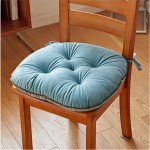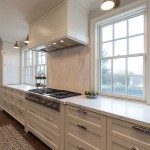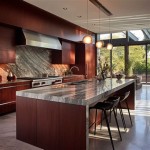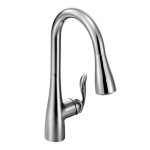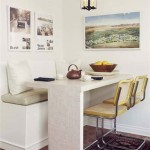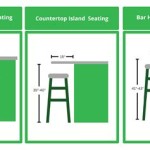Natural Wood Cabinet Kitchen Ideas: A Comprehensive Guide
The kitchen, often considered the heart of the home, is a space where functionality and aesthetics converge. Cabinetry plays a pivotal role in defining the kitchen's overall look and feel. Natural wood cabinets offer a timeless appeal, bringing warmth, texture, and a touch of nature indoors. This article explores various natural wood cabinet kitchen ideas, covering different wood types, styles, design considerations, and hardware choices to help achieve a beautiful and practical kitchen space.
Natural wood cabinets can complement a variety of kitchen styles, from traditional to contemporary. The inherent beauty of wood, with its unique grain patterns and color variations, adds character and depth to any kitchen design. The selection of wood species significantly influences the final appearance and durability of the cabinets. Each wood possesses distinct characteristics that should be considered when planning a kitchen remodel or new construction.
Understanding Different Wood Species for Kitchen Cabinets
The choice of wood species is a crucial decision when selecting natural wood cabinets. Different wood types offer varying levels of hardness, grain patterns, color tones, and resistance to moisture and wear. Understanding these differences will assist in picking the ideal wood for a specific kitchen design and lifestyle.
Oak: Oak is a classic and widely used hardwood for kitchen cabinets. It is known for its prominent grain pattern, which can be either rift-cut (straight grain) or quarter-sawn (flake-like appearance). Oak is a durable and relatively affordable option, making it a popular choice for both traditional and transitional kitchen designs. It accepts stains well, allowing for a wide range of color options. Red oak has reddish undertones, while white oak has a more neutral, brownish hue.
Maple: Maple is a light-colored hardwood with a fine, even grain pattern. It is a denser and harder wood than oak, making it more resistant to dents and scratches. Maple is a good choice for modern and contemporary kitchens due to its clean, minimalist appearance. It can be stained or painted, offering versatility in design. Its smooth surface makes it ideal for painted finishes, as it minimizes grain show-through.
Cherry: Cherry is a premium hardwood known for its rich, reddish-brown color and smooth grain pattern. It offers a sophisticated and elegant look, making it a popular choice for traditional and formal kitchens. Cherry wood darkens naturally over time, adding depth and character. It is relatively soft compared to oak and maple, so it is more susceptible to dents and scratches. However, its inherent beauty often outweighs this consideration.
Hickory: Hickory is one of the hardest and most durable domestic hardwoods. It features a dramatic grain pattern with knots and color variations, giving it a rustic and natural appearance. Hickory is a good choice for kitchens with a farmhouse or country style. Its strength and durability make it suitable for high-traffic areas. The color variations in hickory can range from light cream to dark brown, adding visual interest to the cabinets.
Walnut: Walnut is a dark, luxurious hardwood with a rich, chocolate-brown color and a distinctive grain pattern. It offers a sophisticated and elegant look, making it a popular choice for modern and contemporary kitchens. Walnut is a softer wood than oak or maple, so it is more susceptible to scratches and dents. However, its inherent beauty and unique character make it a highly desirable option. Walnut can be finished with a clear coat to enhance its natural color or stained to achieve a darker hue.
Exploring Different Styles of Natural Wood Kitchen Cabinets
The style of kitchen cabinets plays a significant role in defining the overall aesthetic of the space. Natural wood cabinets can be adapted to fit a variety of styles, from traditional to modern, by varying the door style, hardware, and finish.
Traditional: Traditional kitchen cabinets often feature raised-panel doors, intricate details, and decorative moldings. Wood species like cherry and oak are commonly used for traditional cabinets. Finishes are typically darker stains that emphasize the wood's natural grain and color. Hardware choices include antique brass or oil-rubbed bronze knobs and pulls. Glazing and distressing techniques can be used to enhance the traditional aesthetic.
Transitional: Transitional kitchen cabinets blend elements of both traditional and modern styles. They often feature Shaker-style doors, which are characterized by a simple, clean design with a recessed center panel. Wood species like maple and oak are commonly used for transitional cabinets. Finishes can range from light to medium stains or painted finishes. Hardware choices include brushed nickel or stainless steel knobs and pulls. The goal is to create a balanced and timeless look that is both classic and contemporary.
Modern: Modern kitchen cabinets emphasize clean lines, minimalist design, and a focus on functionality. Flat-panel doors are a hallmark of modern cabinets. Wood species like maple and walnut are commonly used for modern cabinets. Finishes are typically light stains or painted finishes in neutral colors like white, gray, or beige. Hardware choices often include sleek, minimalist pulls or integrated handles. The goal is to create a streamlined and uncluttered look that is both stylish and practical.
Contemporary: Contemporary kitchen cabinets are similar to modern cabinets but allow for more experimentation with materials, textures, and colors. Flat-panel doors are common, but other door styles with unique profiles can also be used. Wood species like walnut and exotic woods are often used for contemporary cabinets. Finishes can range from natural wood tones to bold, contrasting colors. Hardware choices can be more eclectic, including stainless steel, chrome, or even glass. The goal is to create a cutting-edge and visually striking look that reflects current design trends.
Farmhouse: Farmhouse kitchen cabinets evoke a sense of warmth, comfort, and rustic charm. Shaker-style doors are commonly used for farmhouse cabinets, but other door styles with subtle details can also be used. Wood species like oak and hickory are commonly used for farmhouse cabinets. Finishes are typically lighter stains or painted finishes in soft, muted colors like white, cream, or light gray. Hardware choices often include antique brass or black iron knobs and pulls. Open shelving, beadboard accents, and apron-front sinks are common features in farmhouse kitchens.
Design Considerations for Natural Wood Cabinets
When designing a kitchen with natural wood cabinets, several key considerations should be taken into account to ensure a cohesive and functional space. These considerations include kitchen layout, lighting, backsplash design, countertop selection, and overall color palette.
Kitchen Layout: The kitchen layout should be optimized for efficiency and flow. The work triangle, which connects the sink, refrigerator, and cooktop, should be carefully planned to minimize steps and maximize usability. Consider different layout options, such as L-shaped, U-shaped, galley, or island kitchens, depending on the available space and personal preferences. The placement of cabinets should be strategic, with frequently used items stored within easy reach. Tall cabinets can be used to maximize storage space, while base cabinets can be customized with pull-out shelves and organizers. Wall cabinets can be used to display decorative items or store less frequently used items.
Lighting: Adequate lighting is essential in a kitchen for both safety and aesthetics. Natural light should be maximized whenever possible. Supplement natural light with a combination of ambient, task, and accent lighting. Ambient lighting provides overall illumination for the kitchen. Task lighting focuses on specific work areas, such as the countertops and cooktop. Accent lighting highlights architectural features or decorative elements. Under-cabinet lighting is a popular choice for providing task lighting and adding a warm glow to the countertops. Pendant lights can be used to illuminate islands or breakfast bars. Recessed lighting is a versatile option for providing ambient or task lighting.
Backsplash Design: The backsplash is a key design element that can add personality and visual interest to the kitchen. Consider the color, texture, and pattern of the backsplash to complement the natural wood cabinets. Subway tile is a classic and versatile choice that works well with a variety of kitchen styles. Glass tile can add a touch of elegance and sophistication. Stone tile can create a rustic and natural look. Mosaic tile can add a pop of color and pattern. The backsplash should be durable and easy to clean, as it is exposed to splatters and spills. Grout color should be carefully selected to complement the tile and cabinetry.
Countertop Selection: The countertop material should be durable, functional, and aesthetically pleasing. Granite is a popular choice for its durability, heat resistance, and natural beauty. Quartz countertops are another durable and low-maintenance option. Marble countertops offer a luxurious and elegant look but require more maintenance. Wood countertops can add warmth and character to the kitchen but require regular sealing. Laminate countertops are an affordable and versatile option. The color and pattern of the countertop should complement the natural wood cabinets and the overall kitchen design.
Color Palette: The color palette of the kitchen should be carefully considered to create a cohesive and harmonious space. Natural wood cabinets can be paired with a variety of colors, depending on the desired aesthetic. Neutral colors like white, gray, and beige create a clean and timeless look. Warm colors like yellow, orange, and red add warmth and energy to the kitchen. Cool colors like blue, green, and purple create a calming and relaxing atmosphere. Consider the undertones of the wood cabinets when selecting paint colors and other finishes. Use a color wheel to identify complementary colors that will create a balanced and visually appealing space.
:max_bytes(150000):strip_icc()/DesignbyNatalieKraiemPhotobyKirstenFrancis-c8c60d48cd3541a9bdb756a933aa3780-a21edbeb7f374a498dd8a5cfbb33cdd1.jpg?strip=all)
25 Kitchens With Light Wood Cabinets Sure To Impress

52 Natural Wood Kitchen Cabinets Look

How To Make Natural Wood Cabinets The Highlight Of Your Kitchen

Natural Wood Kitchen Cabinet Colors A Blissful Nest

Wood Cabinets In The Kitchen Making A Comeback Town Country Living

The Return Of Natural Wood Kitchen Cabinets

5 Latest Fresh Looks For Natural Wood Kitchen Cabinets

Modern Kitchens With Unpainted Cabinets Bright Green Door

The Comeback Of Wood Kitchen Cabinets

House Home See How Warm Wood Wows In These 75 Kitchens Bathrooms

